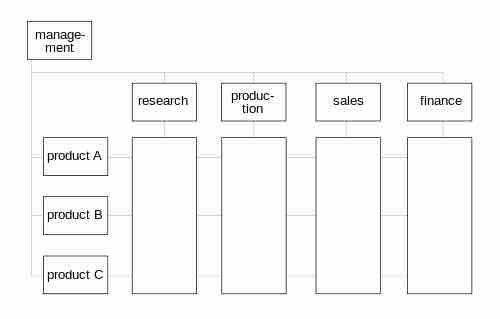Overview of the Matrix Structure
Organizations can be structured in various ways, and the structure of an organization determines how it operates and performs. The matrix structure is a type of organizational structure in which individuals are grouped by two different operational perspectives simultaneously; this structure has both advantages and disadvantages but is generally best employed by companies large enough to justify the increased complexity.

Matrix organizational structure
In a matrix structure, the organization is grouped by both product and function. Product lines are managed horizontally and functions are managed vertically. This means that each function—e.g., research, production, sales, and finance—has separate internal divisions for each product.
In matrix management, the organization is grouped by any two perspectives the company deems most appropriate. Common organizational perspectives include function and product, function and region, or region and product. In an organization grouped by function and product, for example, each product line will have management that corresponds to each function. If the organization has three functions and three products, the matrix structure will have nine (
Advantages of a Matrix Structure
Proponents of matrix management suggest that this structure allows team members to share information more readily across task boundaries, countering the "silo" critique of functional management. Matrix structures also allow for specialization that can both increase depth of knowledge and assign individuals according to project needs.
Disadvantages of a Matrix Structure
A disadvantage of the matrix structure is the increased complexity in the chain of command when employees are assigned to both functional and project managers. This increase in complexity can result in a higher manager-to-worker ratio, which can in turn increase costs or lead to conflicting employee loyalties. It can also create a gridlock in decision making if a manager on one end of the matrix disagrees with another manager. Blurred authority in a matrix structure can result in reduced agility in decision making and conflict resolution.
Matrix structures should generally only be used when the operational complexity of the organization demands it. A company that operates in various regions with various products may require interaction between product development teams and geographic marketing specialists—suggesting a matrix may be applicable. Generally speaking, larger companies with a need for a great deal of cross-departmental communication benefit most from this model.